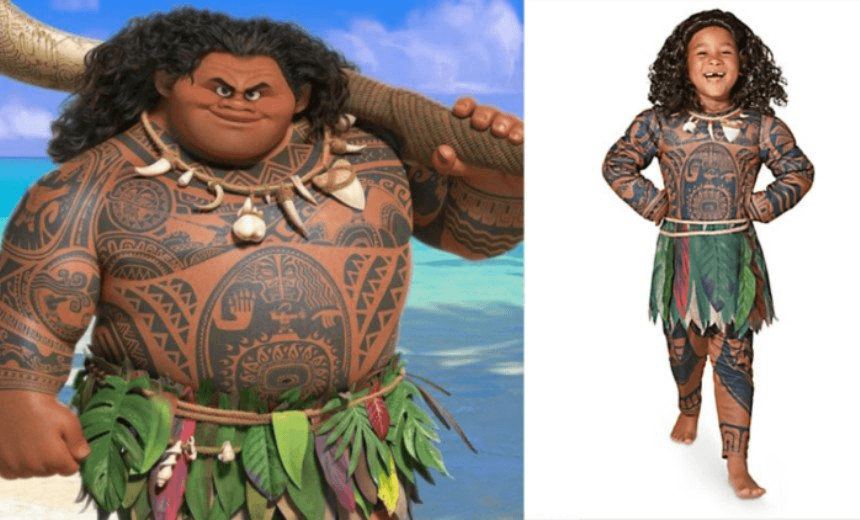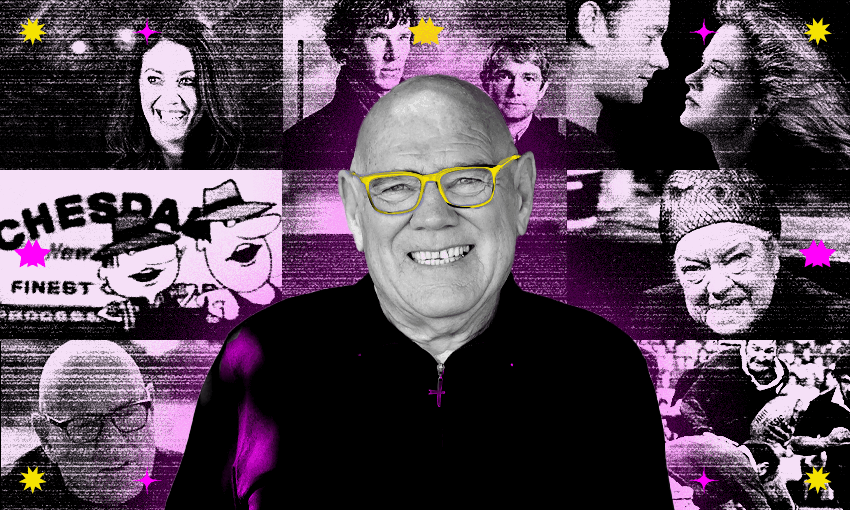Disney have once again come under fire for cultural appropriation, this time for the release of their Maui costume for kids. Madeleine Chapman explains why it might not be so bad.
Mulan is my favourite movie. Not my favourite Disney movie or even my favourite children’s movie. Mulan is my favourite movie, period. I’ve seen it so many times I can now mouth along to every line of dialogue.
A few years ago I wanted to know more about the the story so I looked her up. In the process of learning the original Chinese legend of Fa Mulan, I also learned that the movie was a massive flop in China and many, if not most, Chinese hated it. They hated it because Mulan barely looked Chinese, Mushu was American (Eddie Murphy) and didn’t behave at all how a Chinese dragon would behave. And they hated it because Disney changed the source material to make Mulan more individualistic, which goes against Chinese cultural values.
Essentially, Mulan is an American story in a Chinese context with Chinese props. It sounded bad. Where did that leave me as a diehard fan of the movie? Was I complicit in this cultural appropriation by not protesting it?
Disney announced last year that its next project would be Moana, a heroic tale of a young woman voyaging to a fabled island with demigod, Maui. Moana is the first Polynesian Disney princess. When the news broke, the immediate reaction in New Zealand and the Pacific was for the most part a collective sigh of finally. How incredible for young Pacific Island and Māori children to be able to see brown-skinned heroes on the big screen.
But it wasn’t long before the honeymoon ended and Disney hit its first of many cultural hurdles, all to do with the Maui character.
First there was the casting. Dwayne Johnson, highest earning actor in 2015 and role model for millions of men and women around the world. His films, no matter how critically panned, do extremely well. He’s box office gold. But he also pronounces Samoan and Māori words with a thick American accent, in a way that some might say is incorrect. The reception to his casting was mixed.
Some didn’t like the casting. Why didn’t they cast a local non-Hollywood actor to voice the role? It would add authenticity to the language and feel less Americanised, not to mention provide opportunities for under-utilised Oceanic actors.
Others loved the casting. Dwayne Johnson is a mega star and, while this is a Disney film, it’s about a largely unknown story and people. If anyone is going to make this movie a box office success and bring our story to a larger audience, it’ll be Dwayne Johnson.
But the casting of Maui was nothing compared to the push back that occurred when the first images of Moana and Maui emerged. Maui was big, real big. And people weren’t happy.
Others considered it an accurate depiction and celebration of big, strong, Polynesian men. A character that looked like many people’s fathers and uncles. Both sides of the argument had valid points and never really came to an agreement.
And now Disney have just released the Maui kids costume, a full body padded skin suit complete with tattoos and wig, that has received widespread criticism from indigenous and white folk alike.
When I first came across this picture, my knee-jerk reaction was to recoil. It looked weird to me and I couldn’t put a finger on it. It seemed Disney had really failed. But the longer I’ve thought about it, the more I think they haven’t.
Whether they realised it in development or not, Disney backed themselves into a brown-skinned costume corner by choosing to put Maui on the big screen. He’s the first Disney hero whose skin is an integral and necessary (can you imagine him in a Hawaiian shirt?) part of his look. Tarzan shows a lot of skin but as far as a costume goes, wear a brown bag as underwear and you’re good to go. Every other Disney hero or prince has a full costume complete with top, bottom, and shoes.
Maui wears a grass skirt/green lavalava, a shark tooth necklace, and his tattoos. Of the three, it’s the tattoos that are the most defining of his character.
So you have this amazing demigod character with beautiful tattoos that young boys will be impersonating and wanting to replicate. How do you go about making a costume?
Disney went for the full body skin suit to highlight the tattoos, and got slammed for it. Made in the same way that superhero costumes are made, the Maui suit displays all the tattoos of Maui as well as the grass skirt and wig.
Some on Twitter referred to the costume as being ‘brown face’ and thought it creepy that Disney was encouraging kids to ‘put on brown skin’. The only reason Disney haven’t made a white skin suit is because all their white characters wear a lot of clothes. He-Man, on the other hand, doesn’t, and this is his costume.
A concern was raised that the suit looks cute on the model kid because his skin nearly matches the suit’s colour. But what about when a little white kid puts the suit on, is that not offensive? I discussed this with my cousins last night (who are also Samoan) and one of them responded, “To see a little white kid running around in that and wanting to be brown? That would be awesome.”
After years and years of seeing Samoan Spiderman and Brown Batman at little kids’ birthday parties, how incredible it would be to see white kids looking up to and wanting to be like the Polynesian hero in the movies.
The concerns are warranted, I know that. There’s a certain discomfort in seeing a costume that looks like someone you might know. But consider the costume alternatives.
No brown skin, ergo no tattoos.
By taking away the ‘brown face’ skin part of the costume and the tattoos with it, what you’re left with is a lavalava and a necklace, aka my uncle every day of the year.
Less brown skin
It’s a choice between brown face and white washing for Disney here. Or He-Man with tattoos. Let’s face it, if they released a light-skinned Maui, the world might implode.
Temporary tattoo stickers
Could actually work but then you have small white children sporting traditional Polynesian tattoos. Is that better? I don’t know.
No costume at all
Disney creates the first Polynesian hero and doesn’t enable kids to dress up as him? Disney’s dead.
There is really no way for Disney to win here when dealing with such sensitive issues as people’s culture and traditions. Disney makes movies that kids love and if this is how a Moana costume is received, perhaps the real issue is that Disney should never have made the movie in the first place.
When it comes to cultural appropriation, it’s all down to intent. I know Samoans love to see Europeans embrace the culture, learn the dances and wear traditional clothing, but in the right context. A group of drunk white girls wearing hitched up lavalavas and lolly leis as a Sevens costume is not the right context.
If they end up releasing the same Maui costume in adult sizes, that’s when things get tricky. Another cousin of mine who wears a pe’a (the traditional tatau that cover from the waist to the knees, as seen on Maui) agreed that the costume was okay, if only for children. “Costumes for teenagers or adults would be a bit awkward because of the values it holds,” he said. “The transformation into adulthood and the responsibilities that come with wearing a pe’a should be respected.”
At the end of the day, the Maui costume is made for kids and kids will wear it for one reason; because they love the character and want to be like him.
Despite its downright bad history with cultural appropriation, Disney is giving a huge voice to the stories of the Pacific. Yes, it will most likely divide viewers here in New Zealand. Yes, it will be Americanised more than we’d be comfortable with. And yes, it will open the floodgates to many questionable adult Halloween costumes. But it’s also allowing brown kids all over the world to see themselves on the big screen as strong, powerful, smart adventurers. It’s allowing kids to see that their culture is worth celebrating so much that Disney, master of all kids entertainment, are making a movie about it. It’s a good thing with many faults, but still a good thing.
As I was starting to question my love for Mulan, I realised that despite knowing it wasn’t close to perfect, it didn’t take away from the fact that seeing a young woman be clever and tough in a Disney movie meant a lot to me as a child.
I read an insightful piece by Huffington Post contributor, Faye Wang, on why so many Chinese reacted badly to Mulan and she finished with this:
“I think deep down Chinese feel upset because we didn’t do it. Mulan is our legend, and we didn’t do anything about it that’s nearly as cool and beautiful… A lot of people asked, after watching Mulan, why can’t we do stuff like this?”
Perhaps after Moana comes out and the debates simmer down, New Zealanders might start thinking the same thing.



